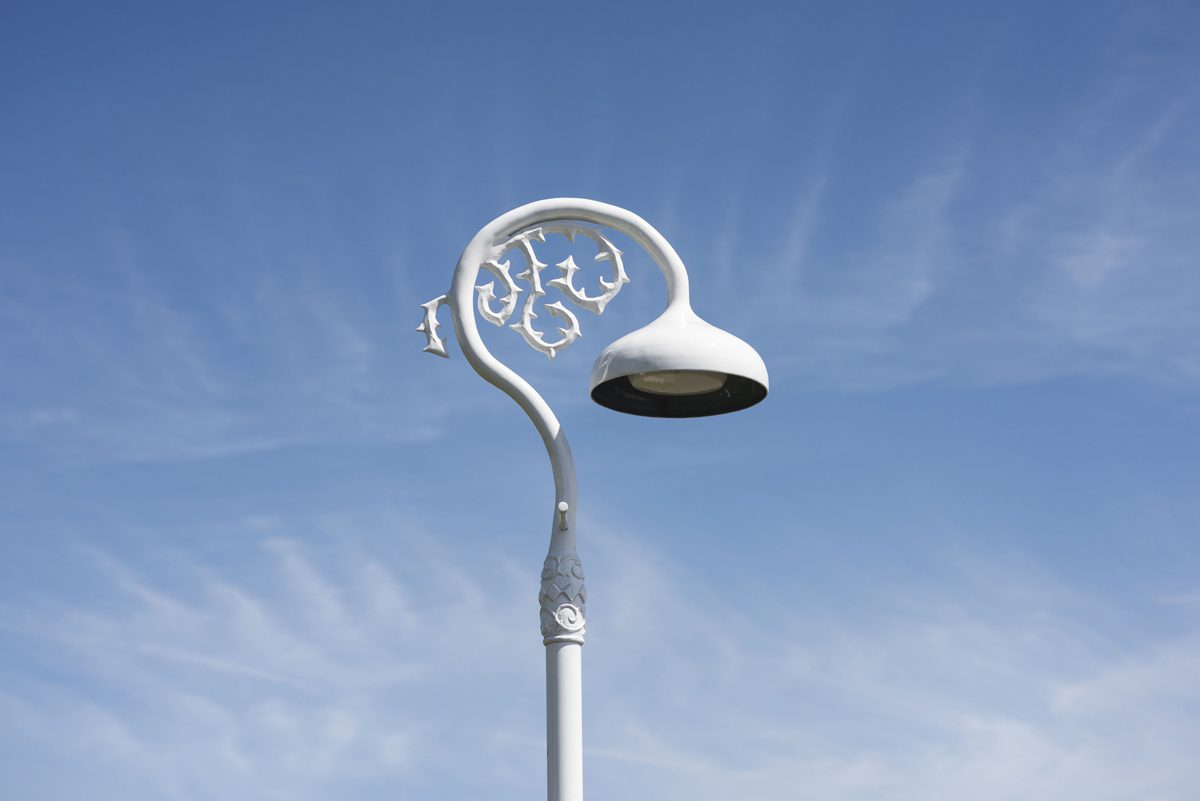Newly commissioned, site-specific artworks in public spaces around the town explore the theme ‘double edge’
For the third Folkestone Triennial, newly commissioned site-specific artworks have been installed in public spaces around the town, exploring the theme ‘double edge’ (above: Richard Woods’ ‘Holiday Home’ consists of six differently-coloured but otherwise identical one-third size houses in unlikely locations).
‘Double edge’ refers to the two main axes around which Folkestone has developed historically and geographically: the seashore and the Pent Stream, an ancient watercourse flowing from the North Downs into the sea, dividing east and west Folkestone. ‘Double edge’ uses the specifics of the locality to explore universal edge issues, including borders and frontiers, margins and the periphery, thresholds, gateways and the liminal.
The Islamic Cultural Centre has operated as a Mosque for 28 years, but many residents in the town are unaware of it. HoyCheong Wong has introduced a temporary façade, ‘Minaret’, with minarets and arches characteristic of Islamic architecture, which lights up at night to add beauty and visibility.
Studio Ben Allen’s installation ‘The Clearing’ has transformed Folkestone Quarterhouse for its temporary function as the Triennial Visitor Centre. The concept was inspired by a clearing in a forest, the moment of orientation when you stop walking and appreciate where you are.
David Shrigley invited an artist friend from Edinburgh to visit and memorise in just 40 seconds the decorative lampposts along The Leas. Her creation from memory, ‘Lamp Post (as remembered)’ now stands among the others. This sculpture wittily takes a piece of something conceived as heritage and re-presents it as creativity.
Sol Calero’s ‘Casa Anacaona’ is a co-production with Womad World of Art. This social space has been made in collaboration with Folkestone creatives as a gathering place for informal activities. The brightly painted furniture, inspired by stereotypes of Latin American culture, contributes to the sense of place within which visitors may have a cross-cultural experience.
Gary Woodley presents ‘Impingement No 66 “Cube Circumscribed by Tetrahedron – Tetrahedron Circumscribed by Cube”‘, addressing the interaction between ideas and reality, platonic forms in dialogue with physical architectural space. It draws two pairs of figures onto and through Coronation Parade, a cliff-stabilising structure between landscape and architecture.
Lubaina Himid collects ceramic jelly moulds, adding her own painted pattern decorations, as a tribute to the Black community and evoking the connection between slavery and sugar. The ‘Jelly Mould Pavilion’ is on the former Rotunda leisure site, where barley sugar, candy floss and toffee apples were once on offer to summer visitors.
Sinta Tantra’s ‘1947’ transforms The Cube in Tontine Street, an area inhabited by migrants from many parts of the world, using colours found in a poster from 1947 advertising rail travel to Folkestone, and with shapes inspired by the compositions of Ukrainian-born French artist Sonia Delaunay.
This, the fourth Folkestone Triennial, runs until 5 November, although some of the works will subsequently remain in the town.































